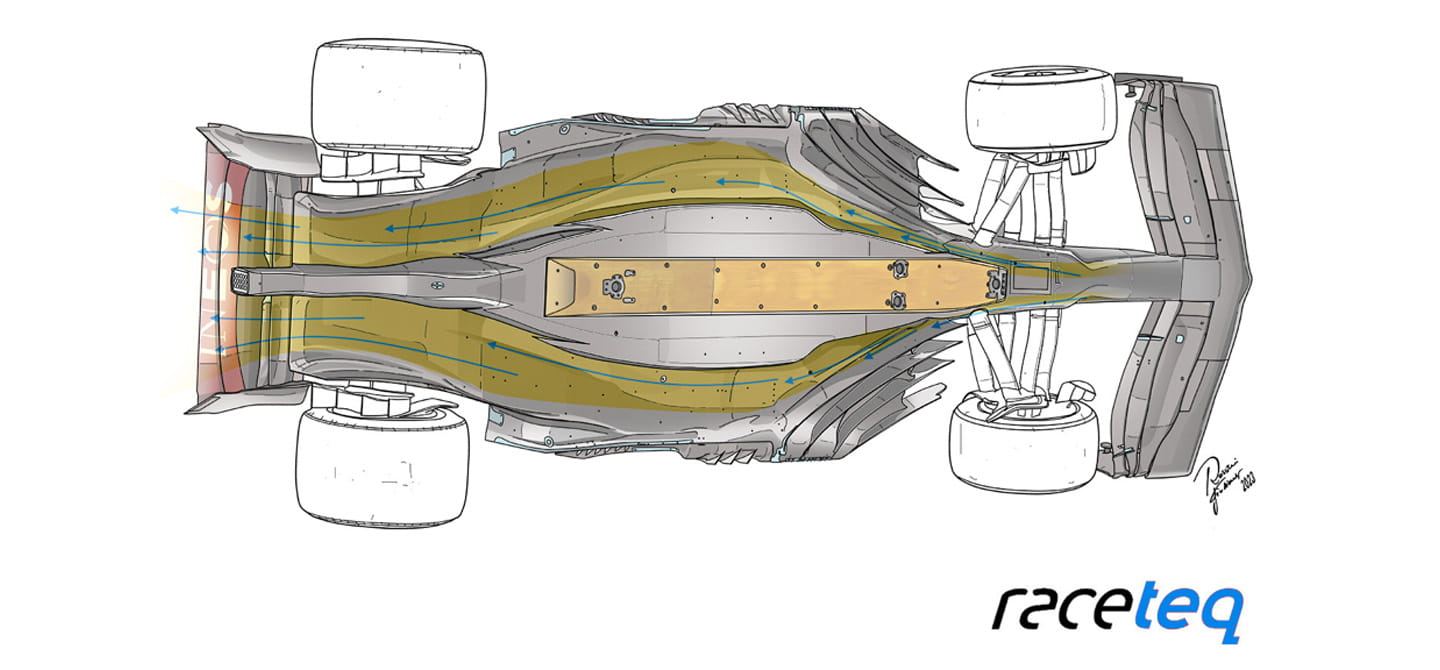Innovation
Formula 1 aerodynamics: What are Venturi tunnels and how does porpoising affect F1 cars?
by Rosario Giuliana
3min read

A major change to the Formula 1 technical regulations in 2022 led to ground effect making it to the fore - and Venturi tunnels playing an even more important role.

Illustration showing the change from flat underfloors in 2021 to channelled underfloors in 2022.

Innovation
Ground effect in F1: How aviation pioneers sparked a motorsport revolution
Ground effect is an effect that has been studied and applied in F1 for decades having gained prominence in F1 around the late 1970s. Aerodynamic engineers in F1 have always sought downforce - the force that keeps the wheels of the car adhered to the asphalt.
What is the Venturi effect?
The Venturi effect found its application in F1 because its use allowed a very high amount of downforce to be generated - without creating drag, as wings and ailerons do. Downforce acts vertically upon the surface of the car while drag acts longitudinally, therefore serving to slow down the car.
The floors of F1 cars are designed to have the shape of a Venturi tunnel, with an inlet and outlet section that is much wider than the central section.
In the central area, the gap between the floor of the car and the surface of the track is much narrower. When the air flows through this narrower area, it accelerates.
One of the key principles of fluid dynamics is Bernoulli’s principle which correlates the speed and pressure of a fluid. Bernoulli’s principle states that the faster the flow, the lower the pressure.
Therefore, in this central area of the floor of the car, when the flow increases in speed it creates a low-pressure zone. This generates greater downforce because there’s an area of high-pressure flow acting above the car, thus sucking it down further towards the surface.

Visualisation showing the airflow beneath an F1 car with the lighter-coloured area denoting faster airflow
The diffuser - an aerodynamic device at the rear of the floor and the car - is a wider channel that ensures the air is pulled through that narrow tunnel, therefore increasing the area of low-pressure flow below the car.
The underfloor of F1 cars was flat from 1983 to 2022, after which ground effect came to the fore with mandated tunnels underneath the car.
Stalling and porpoising - what are the downsides of Venturi tunnels?
One unwanted side effect of having a floor with Venturi tunnels is bouncing, or ‘porpoising’.
From the first pre-season tests of the 2022 F1 season, F1 cars were bouncing or porpoising at high speed. This occurs due to airflow stalling as it travels through those tunnels.
.jpg?cx=0.5&cy=0.5)
The change in technical regulations in 2022 led to cars being designed with the underfloor in mind. Cars were designed with a stable and flat platform (above) to enhance the effects of the Venturi tunnels
When the floor hits the ground, some of the downforce generated is quickly lost. When the car rises back up, the downforce is generated again and this pattern repeats - causing bouncing.
This problem was known to engineers as early as the 1970s but, as ground effect wasn’t central to the technical regulations for 40 years, engineers were caught by surprise when the 2022-specification cars were put on track.
Bouncing is hard to predict in simulations (wind tunnels and Computational Fluid Dynamics) as the effect only occurs at high speeds, when downforce is acting at high levels.

An illustration showing Venturi tunnels underneath an F1 car.
How does bouncing or porpoising affect F1 drivers and cars?
For drivers, this effect can be uncomfortable - and even painful at times through high speed sections.
.jpg?cx=0.5&cy=0.5)



